The Weapon Mechanics Guide for Monster Hunter World (MHW) helps players understand how to best utilize the game's arsenal. In the world of Monster Hunter there is a lot more that goes into hunting than bashing and slashing one's way to victory. Many different factors play a part in the damage dealt and receives by Hunters.
See Augmentations and Upgrades for information on improving the equipment in your arsenal, including Weapons.
See Elderseal as well for endgame hunting and Free Elem/Ammo Up for information on weapons with greyed-out Elemental and Status Damage.
The following is a display of several individual pages.
Jump To: Sharpness | Raw (Physical) Damage | Elemental Damage | Affinity | Status Effects.
Sharpness
Sharpness in Monster Hunter World (MHW) is a factor in determining the cutting power of a Weapon and its damage output.
For a more complete rundown on combat with Monsters, see Weapon Mechanics, Defense, and Elemental Resistances.
The Sharpness level of a weapon will degrade over the course of a fight. When wielding a Blademaster Weapon, it is important to keep it at its maximum Sharpness with Whetstones. This will make cutting Monster parts easier (blade weapons only) and lower the chance of an attack being deflected.
There are 7 levels of Sharpness. Damaging Monster parts sometimes requires a weapon to currently be at a certain level.
Low Level Sharpness
Red - This is the first and lowest level of Sharpness possible. Most if not all attacks made at this Sharpness will cause a blade (or blunt weapon) to bounce off the hides of monsters.
Orange - The second level of Sharpness that is not much better than red. Many attacks will be deflected.
Yellow - The third level of Sharpness. At this level some hits can be landed on a monster in the early stages of the game.
Medium Level Sharpness
Green - The fourth level of Sharpness. This is where most attacks will be successful.
Blue - The fifth level of Sharpness. Attacks will be even more successful unless striking monsters hard parts.
High Level Sharpness
White - The sixth level of Sharpness. All attacks will be successful unless striking some monsters hard parts (particularly on Master Rank monsters).
Purple - The seventh level of Sharpness. Master Rank weapons only. All attacks will be successful unless striking some monsters hard parts.
In addition to reducing chance of deflection, Sharpness will also increase Raw (Physical) Damage and Elemental Damage.
See Attack Power for more information.
Sharpness Raw Damage Multiplier
| Red | Orange | Yellow | Green | Blue | White | Purple |
|---|---|---|---|---|---|---|
| 0.50 | 0.75 | 1.00 | 1.05 | 1.20 | 1.32 | 1.39 |
Sharpness Elemental Damage Multiplier
| Red | Orange | Yellow | Green | Blue | White | Purple |
|---|---|---|---|---|---|---|
| 0.25 | 0.50 | 0.75 | 1.00 | 1.0625 | 1.15 | 1.25 |
Sharpness Consumption by Weapon and Motion
Sharpness consumption rate is often -1 Sharpness per hit. Some weapons or attacks for specific weapons may consume Sharpness at a faster rate.
Please note that guarding against roars, wind pressure and tremors does not cost any Sharpness.
| Motion | |
|---|---|
| Any weapon regular attacks (hit) | -1 |
| Any weapon regular attacks (bounce) | -2 |
| Guarding (Great Sword or Charge Blade), resulting in small knockback | -1 |
| Guarding (Great Sword or Charge Blade), resulting in medium knockback | -2 |
| Guarding (Great Sword or Charge Blade), resulting in large knockback | -10 |
| Gunlance Normal Shells | -2 |
| Gunlance Long Shells | -2 |
| Gunlance Wide Shells | -3 |
| Gunlance Wyvernfire | -10 |
| Weapon | When | |
|---|---|---|
| Great Sword | Level 3 charged attacks | Significant Bonus |
| Great Sword | Level 2 charged attacks | Medium Bonus |
| Melee attacks | Effect of Demon Ammo is active | Small Bonus |
| Great Sword | Level 1 charged attacks | Small Bonus |
| Long Sword | When at maxed spirit gauge | Small Bonus |
| Sword & Shield | All attacks | Very Small Bonus |
| Great Sword | Hitting monster with the middle portion of your sword | Very Small Bonus |
| Long Sword | Hitting monster with the middle portion of your sword | Very Small Bonus |
| Lance | Using Cut damage in a Blunt hitzone | Significant Penalty |
| Blademaster weapons | Hitting monster at end of a swing, during yellow Sharpness | Significant Penalty |
| Blademaster weapons | Hitting monster at start of a swing, during yellow Sharpness | Very Significant Penalty |
Raw (Physical) Attack Power
Attack Power or Raw Damage is a damage statistic in Monster Hunter World (MHW). Monsters also have raw damage, which is offset by the hunter's Defense stat.
- For a more complete rundown on combat with Monsters, see Weapon Mechanics, Defense, and Elemental Resistances.
What is Attack Power in Monster Hunter World?
Attack Power is a fundamental aspect of a hunter's effectiveness in Monster Hunter World. Represented by the weapon's raw damage, higher Attack Power leads to more potent strikes. It's crucial to balance Attack Power with Sharpness, Affinity, and elemental properties for optimal damage output. Hunters can enhance Attack Power through weapon upgrades, armor skills, and consumables. Mastering the intricacies of Attack Power is essential for conquering formidable monsters.
Weapon Upgrades and Attack Power
Weapon upgrades play a pivotal role in boosting Attack Power in Monster Hunter World. As hunters progress, they acquire materials from slain monsters to augment their weapons, increasing raw damage. Each weapon type has its unique upgrade tree, allowing hunters to tailor their Attack Power enhancements to match their preferred playstyles. Choosing the right upgrades and understanding the impact on Attack Power is key to mastering the art of monster hunting.
- For more on this topic, please heady to the Weapons page. Consult each weapon individually to learn about its weapon tree.
Skills and Attack Power
Skills are integral in maximizing a hunter's Attack Power in Monster Hunter World. Skills like Attack Boost, Critical Eye, and Weakness Exploit directly contribute to increased damage output. Crafting and equipping armor sets that synergize with a hunter's weapon type and playstyle enhance the effectiveness of these skills. Assembling a well-balanced armor set that focuses on both offensive and defensive capabilities is crucial for hunters seeking to optimize their Attack Power.
- For more on this topic, please consult the Skills page
Affinity in Monster Hunter World
Affinity, representing a weapon's critical hit chance, is intertwined with Attack Power in Monster Hunter World. Positive affinity increases the likelihood of dealing critical hits, while negative affinity signifies a chance for reduced damage. Balancing high Attack Power with positive affinity is crucial for consistent and impactful strikes. Understanding the intricacies of affinity and its synergy with Attack Power allows hunters to fine-tune their weapons for optimal performance against diverse monsters in the New World.
- For more on this topic, please consult the Affinity page.
How Attack Power is Calculated
Raw Damage - also called Physical - is calculated separately from Elemental Damage and Status Effect buildup. The higher the Attack on your weapon the more Raw Damage you will deal to a monster.
Formula for Physical Damage displayed
Raw Base x Sharpness x Combo Move x
x Monster Part x Quest Difficulty x Rage Status
For example, hitting a Great Jagras' tail with a Wide Slash from the Buster Sword III, assuming Quest Difficulty and Rage status multipliers of 1.0 and no boost to Attack from Items or Skills, will yield:
100 (Raw Base)
x 1.05 (Sharpness multiplier for green-level sharpness - non-elemental)
x 0.26 (Combo Move multiplier for Great Sword's Wide Slash attack)
x 0.45 (Monster Part multiplier for Great Jagras' tail against Cut Damage)
= 12 damage (rounded down)
Raw Base or True Raw
The Attack value displayed on the Attack Status portion of the Equipment Info screen is a bloated value obtained by multiplying a weapon's Raw Base by a modifier specific to the weapon's type. Changes to Raw Base made by Skills such as Attack Boost or Items such as Demondrug are also subjected to this multiplier. The weapon type modifiers are as follows:
Hammer (x 5.2)
Great Sword (x 4.8)
Hunting Horn (x 4.2)
Charge Blade (x 3.6)
Switch Axe (x 3.5)
Long Sword (x 3.3)
Insect Glaive (x 3.1)
Lance (x 2.3)
Gunlance (x 2.3)
Heavy Bowgun (x 1.5)
Sword and Shield (x 1.4)
Dual Blades (x 1.4)
Light Bowgun (x 1.3)
Bow (x 1.2)
To calculate a weapon's Raw Base, simply divide its displayed Attack value (without boosts from Skills or Items) by its type-specific modifier.
Notes
While trying out weapons in the Training area, note that the Monster Part multiplier for the large training post is 0.8 for Physical damage and 0.3 for Elemental.
Refer to Sharpness, Weapons and Monsters for more information on these multipliers.
Refer to Affinity to see how it can affect displayed damage numbers.
Remember that Raw Damage is subdivided into three types: Cut, Blunt, and Ammo, and that Monster Body Parts have individual Body Part Multipliers for each.
Refer to Damage Types to see how different weapons may perform in combat.
Skills that Affect Attack Power
The following Skills boost Raw Base when granted by Armor or Charms:
Weapons with the Highest Attack Power
![]() Great Sword - Black Fatalis Blade (1632)
Great Sword - Black Fatalis Blade (1632)
![]() Sword & Shield - True Fatalis Sword (490)
Sword & Shield - True Fatalis Sword (490)
![]() Hammer - Fatalis Demolisher (1820)
Hammer - Fatalis Demolisher (1820)
![]() Lance - True Fatalis Lance (851)
Lance - True Fatalis Lance (851)
![]() Switch Axe - True Fatalis End (1225)
Switch Axe - True Fatalis End (1225)
![]() Insect Glaive - True Fatalis Dyaus (1101)
Insect Glaive - True Fatalis Dyaus (1101)
![]() Light Bowgun - Ten Thousand Volts (403)
Light Bowgun - Ten Thousand Volts (403)
![]() Long Sword - Fatalis Zaggespanon (1155)
Long Sword - Fatalis Zaggespanon (1155)
![]() Dual Blades - Fatalis Dual Skies (518)
Dual Blades - Fatalis Dual Skies (518)
![]() Hunting Horn - Fatalis Menace Wailer (1470)
Hunting Horn - Fatalis Menace Wailer (1470)
![]() Gunlance - True Fatalis Gunlance (897)
Gunlance - True Fatalis Gunlance (897)
![]() Charge Blade - True Fatalis Charger (1224)
Charge Blade - True Fatalis Charger (1224)
![]() Bow - Bow of Vice & Violence (444)
Bow - Bow of Vice & Violence (444)
![]() Heavy Bowgun - Vor Buster (510)
Heavy Bowgun - Vor Buster (510)
Elemental Damage
Elemental Damage or Elements in Monster Hunter World (MHW) refers to the secondary damage dealt by Weapons and Monsters and lowered by specific Resistances.
For a more complete rundown on combat with Monsters, see Weapon Mechanics, Defense, and Elemental Resistances.
FAQ: Some Weapons have Elemental Damage that is grayed out and in parentheses. These Weapons require a skill called Free Elem/Ammo Up in order to take effect.
Elemental Damage
Each monster has weaknesses and resistances that will cause it to take more or less damage from specific sources. For example a fire monster may take more elemental damage from weapons that deal water damage but less or zero elemental damage from weapons that deal fire elemental damage.
Monsters can also deal elemental damage to the hunter. Armor with high resistances to certain elements will cause you to take less damage and reduce the effects of Elemental Blights.
Some important things to note when considering Elemental Damage against Monsters
- Elemental weakness is not always a given. Just because a monster uses fire does not mean it is weak to water.
The ingame Monster Field Guide contains information on Monster weaknesses. - Some monsters possess resistances that change during the course of a fight because of breakable defenses.
- Elemental Damage is normally not affected by a weapon's Affinity. The Critical Element Skill will allow Elemental Damage to strike critical hits.
- Poison, Sleep, Paralysis, Blast and Stun are Status Effects, which are separate from Elemental Damage and Raw (Physical) Damage. They do not deal damage with each hit, but rather cause a hidden buildup that will eventually trigger an effect.
See Elemental Resistances for more information on resistances possessed by Monsters and the Player & Allies.
Calculating Elemental Damage
Like Raw Damage, Elemental Damage is modified by Sharpness and Monster Body Part multipliers; it is not affected by Combo Move multipliers or weapon type, however. This means that, for the most part, Elemental Damage is a flat addition to a weapon's damage.
The formula for the Elemental portion of damage displayed during combat is:
Starting Elemental / 10 x Sharpness
x Body Part x Quest Difficulty x Rage Status
For example, hitting a Great Jagras' tail with a Wide Slash from the Red Wing (180 Fire and 768 Physical), assuming Quest Difficulty and Rage status multipliers of 1.0 and no boost to Fire Damage from Skills, will yield:
18 (Starting Elemental value / 10)
x 1.0625 (Sharpness multiplier for blue level sharpness towards elemental)
x 0.15 (Monster Part multiplier for Great Jagras' tail against Fire Damage
= 2.9 Fire Damage (in addition to 22.5 slashing damage)
Notes
Displayed Damage numbers are an addition of both Physical and Elemental Damage (if any).
While trying out weapons in the Training Area, note that the Monster Part multiplier for the large training post is 0.8 for Physical damage and 0.3 for all types of Elemental.
Refer to the Sharpness, Weapons and Monsters pages for more information on these multipliers.
Refer to Affinity to see how it can affect displayed damage numbers.
Elemental Ammo
Elemental Bowgun Ammo is noteworthy for having both a Raw (Physical) component and an Elemental component. The Elemental component is calculated much like Physical damage in that it begins with the current value for Attack, and is subjected to both a Weapon type multiplier and a Combo Move multiplier.1 Skills that boost Elemental Damage increase this starting value taken from Attack, before the Weapon type multiplier is applied.
The formula for the Damage displayed from Elemental Ammo is:
Attack / Weapon Type x Motion Value x Body Part
+ (Attack + Skill Bonus) / Weapon Type x Motion Value x Body Part
For example:
Without the Water Attack Up Skill, Water Ammo from an Aqua Assault I (180 Attack) against the Large Training Post will yield:
180 / 1.5 (Attack modified by Weapon Type)
x 0.08 (Physical Motion Value multiplier for Elemental Ammo)
x 0.8 (Body Part multiplier for Training Post against Physical)
+ (180 + 0) / 1.5 (Starting Elemental value modified by Weapon Type and Skill)
x 0.22 (Elemental Motion Value multiplier for Elemental Ammo)
x 0.3 (Body Part multiplier for Training Post against Elemental)
= 16 Damage (rounded up)
With Water Attack Up level 3, Water Ammo from an Aqua Assault I (180 Attack) against the Large Training Post will yield:
180/ 1.5 (Attack modified by Weapon Type)
x 0.08 (Physical Motion Value multiplier for Elemental Ammo)
x 0.8 (Body Part multiplier for Training Post against Physical)
+ (180+ 100) / 1.5 (Starting Elemental value modified by Weapon Type and Skill)
x 0.22 (Elemental Motion Value multiplier for Elemental Ammo)
x 0.3 (Body Part multiplier for Training Post against Elemental)
= 20 Damage
In the case of Elemental Ammo striking a critical hit (Affinity,) the critical hit multiplier will normally be applied to the Physical portion only.
With the Critical Element or the ![]() Iceborne-only True Critical Element Skills active, a special critical hit multiplier will apply to the Elemental portion. This special multiplier is dependent on Weapon type.
Iceborne-only True Critical Element Skills active, a special critical hit multiplier will apply to the Elemental portion. This special multiplier is dependent on Weapon type.
The Critical Boost Skill only affects the Physical portion of Elemental Ammo.
See Light Bowgun and Heavy Bowgun for information on Combo Move multipliers of Ammo and more.
Types of Elemental Damage
The following are the five types of Elemental Damage that can be wielded by Hunter Weapons or Monster attacks.
See Status Effects for more information on their corresponding Elemental Blights and Elemental Resistances for information on defending against Elemental attacks.
Fire

Fire Element is usually strong against Ice but weak to Water. Taking fire damage can cause Fireblight, which slowly depletes Health and leaves no recoverable damage. This can be removed by rolling repeatedly. Rolling through water will remove it instantly.
Water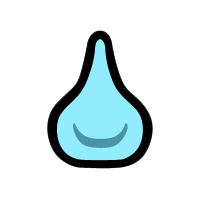
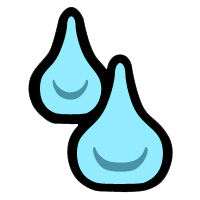
Water Element is usually strong against Fire but weak to Thunder. Taking water damage can cause Waterblight, which slows Stamina recovery.
Thunder
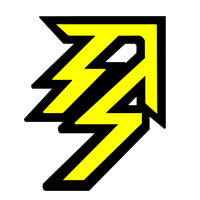
Thunder Element is usually strong against Water and Dragon, but weak to Ice. Taking thunder damage can cause Thunderblight, which increases susceptibility to Stun.
Ice
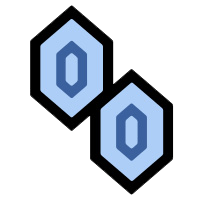
Ice Element is usually strong against Thunder and Dragon, but weak to Fire. Taking Ice damage can cause Iceblight which increases Stamina use.
Dragon

Dragon Element is quite a bit different from other elements. Its the only element in the game that is usually weak to itself. Frequently, it is also weak to Thunder and Ice. Taking Dragon damage can cause Dragonblight, which lowers weapon Affinity, completely removes a Weapon's Elemental Damage, and lowers the Status buildup of Poison, Paralysis, Sleep, and Blast attacks.
Improving Elemental Damage
Skills
The following Skills and Effects can be used to improve Elemental Damage performance on Weapons.
- Fire Attack increases Fire Damage by a flat amount
- Water Attack increases Water Damage by a flat amount
- Thunder Attack increases Thunder Damage by a flat amount
- Ice Attack increases Ice Damage by a flat amount
- Dragon Attack increases Dragon Damage by a flat amount
- Critical Element allows the Elemental Damage of a Weapon to be affected by Affinity
- Elemental Attack Boost (S)/(L) from Hunting Horns increases Elemental Damage by approximately 7.5% and 10% respectively, displaying to the nearest 10. See Status Effects for more information.
Effect
Using the previous example of the Red Wing (180 Fire and 768 Physical), and adding one level of the Fire Attack Skill will improve the weapon's Fire damage to 210 and yield:
21 (Starting Elemental value / 10)
x 1.0625 (Sharpness multiplier for blue level sharpness towards elemental)
x 0.15 (Monster Part multiplier for Great Jagras' tail against Fire Damage
= 3.3 Fire Damage (in addition to 22.5 slashing damage)
Notes
- Since elemental damage Skills add a flat amount and and are not affected by weapon-type or motion value multipliers, they are more often suited to fast weapons such as the Dual Blades or Sword & Shield.
1 Information taken from a Reddit post made by user mltsquigs and confirmed ingame.
Affinity
Affinity, also known as Critical Chance, in Monster Hunter World (MHW) is a weapon's chance to deal a bonus or a penalty to Damage on attacks. Some Weapons have innate Affinity, but it can also be increased with Skills and Equipment
For a more complete rundown on combat with Monsters, see Weapon Mechanics, Defense, and Elemental Resistances.
How Affinity Works
Affinity is determined by the Weapon and Skills that are being used, and is displayed as a percent value in the Attack Status portion of the Equipment Info screen. At 0% Affinity there is no chance for a bonus or penalty to damage. A positive Affinity value denotes the chance for an attack to "crit," which applies a bonus of 25% to Physical (Raw) Damage. A negative value, on the other hand, denotes the chance to "blunder," which applies a penalty of 25% to Physical Damage.
The bonus Damage applied by critical hits can be increased by the Critical Boost Skill.
The effect of Affinity is signaled by a flashy slash animation and a specific sound. Damage numbers will show a small star symbol under critical damage hits.
Please note that Affinity ONLY applies to Raw Damage under normal circumstances. You must have the Critical Element skill active for it to apply to Elemental Damage or the Critical Status Skill to apply it to Status Damage.
Increasing Weapon Affinity
The following Skills and Equipment increase your weapon Affinity. Note that with the Critical Draw skill you will always Crit on a draw attack.
- Affinity Booster is a Specialized Tool that creates an Affinity cloud for you and fellow hunters.
- Critical Eye increases Affinity at all times
- Affinity Sliding increases Affinity after sliding
- Attack Boost increases Affinity at levels 4-7
- Weakness Exploit increases Affinity when striking a Monster weak spot
- Agitator increases Affinity when a Large Monster becomes enraged
- Maximum Might increases Affinity when Stamina is full
- Latent Power increases Affinity after certain conditions are met
- Critical Boost increases damage of critical hits
- Critical Element and its stronger version True Critical Element allows Affinity to affect Elemental Damage
- Critical Status and its stronger version True Critical Status allows Affinity to affect Status Damage
- Affinity Augment increases the weapon's innate Affinity
Weapons with High Affinity
- Taroth Hammer "Thief" (35%)
- Taroth Pipe "Thief" (35%)
- Aloy's War Bow (30%)
- Azure Star Dragon Dance (30%)
- Garon Dharah (30%)
- Fate's Ember (30%)
- Hate's Undying Flame (25%)
- Odium (25%)
- Dancing Duval (25%)
- Coral Chordmaker (25%)
- Crushing Beak (25%)
Status Effects
Status Effects are special buffs or ailments in Monster Hunter World (MHW) which come in the form of Player-and-Ally-only Effects, Elemental Blights, and Abnormal Status Ailments. Both Hunters and Monsters can receive Effects from Skills, the environment and attacks.
For a more complete rundown on combat with Monsters, see Weapon Mechanics, Defense, and Elemental Resistances.
Status Effects that affect only the Player and Allies are granted from Items, the Canteen, Hunting Horns, and the Coral Orchestra Palico gadget.
Elemental Blights are inflicted on the Player and Allies by Elemental Monster attacks.
Abnormal Status Ailments are inflicted on the Player and Allies by certain Monster attacks. Some can also be inflicted on Monsters by Weapons which wield the corresponding status damage.
Status Numbers and Applications in Monster Hunter World
Contrary to what may seem apparent, the numerical value displayed on your Weapon doesn't directly represent the actual amount of status it carries. For instance, if your weapon boasts 100 ![]() paralysis, the true value is 1/10th of that, translating to 10 paralysis. Unlike elemental weapons, status weapons don't inflict their effects with every hit. Instead, there's a 1/3 chance to apply the status. This is where the speed of your weapon comes into play; faster weapons have an advantage in applying status effects due to their rapid attack rates.
paralysis, the true value is 1/10th of that, translating to 10 paralysis. Unlike elemental weapons, status weapons don't inflict their effects with every hit. Instead, there's a 1/3 chance to apply the status. This is where the speed of your weapon comes into play; faster weapons have an advantage in applying status effects due to their rapid attack rates.
Individual Status Variations
It's important to note that the specifics of each Status Effect vary across monsters. The damage dealt by Poison and Blast, the duration of Sleep and Paralysis, and the duration of the monster's affliction by poison all differ from creature to creature. Moreover, some Monsters exhibit immunity to specific status effects, emphasizing the need for adaptability in your hunting strategies.
Monster Thresholds and Resistances
Each monster comes equipped with an initial threshold for each status ailment. Breaking this threshold is the key to triggering the corresponding effect. To illustrate, if a monster boasts 100 ![]() paralysis resistance, you'd need 10 successful applications of a 10
paralysis resistance, you'd need 10 successful applications of a 10 ![]() paralysis weapon to induce paralysis. Once a monster succumbs to a status effect, it becomes more resistant, subsequently requiring additional procs to trigger the same effect. This resistance escalation demands strategic planning for continued success in status application.
paralysis weapon to induce paralysis. Once a monster succumbs to a status effect, it becomes more resistant, subsequently requiring additional procs to trigger the same effect. This resistance escalation demands strategic planning for continued success in status application.
Note that each status operates independently, with its own set of resistance levels for every monster. This means that applying one status does not inherently increase the resistance of another.
Character Status Effects
Beneficial Status Effects that appear on the Player and Allies are granted by Items, the Canteen, Hunting Horn Melodies, and the Coral Orchestra Palico Gadget
Many of these Effects have counterparts that are granted by Skills, but they are distinct as they require different specific actions to trigger while out in the field. Some also stack on top of Skill effects, with some limitations. A Hunter can tell when one of these Status Effects has been triggered by the icons that appear on the HUD.
 Hunting Horn Melodies
Hunting Horn Melodies
![]() Elemental Attack Boost
Elemental Attack Boost
![]()
![]() Fire Res Boost (S),(L)
Fire Res Boost (S),(L)
![]()
![]() Water Res Boost (S),(L)
Water Res Boost (S),(L)
![]()
![]() Thunder Res Boost (S),(L)
Thunder Res Boost (S),(L)
![]()
![]() Ice Res Boost (S),(L)
Ice Res Boost (S),(L)
![]()
![]() Dragon Res Boost (S),(L)
Dragon Res Boost (S),(L)
![]() Abnormal Status Attack Increased
Abnormal Status Attack Increased
![]() Blight Negated
Blight Negated
![]() Ailments Negated
Ailments Negated
![]() Knockbacks Negated
Knockbacks Negated
![]()
![]() Earplugs (S),(L)
Earplugs (S),(L)
![]() Wind Pressure Negated
Wind Pressure Negated
![]() All Wind Pressure Negated
All Wind Pressure Negated
![]() Evasion Enhanced
Evasion Enhanced
Self Improvement
Movement Speed Up
Attack Deflection Protection
Scoutfly Power Up
Tool Use Drain Reduced (S),(L)
 Coral Orchestra Effects
Coral Orchestra Effects
![]() Attack Up
Attack Up
![]() Defense Up
Defense Up
![]() Affinity Up
Affinity Up
![]() Health Increased
Health Increased
![]() Divine Protection
Divine Protection
![]() Negate Environmental Damage
Negate Environmental Damage
![]() Negate Stun
Negate Stun
![]() Negate Paralysis
Negate Paralysis
![]() Wind Pressure Negated
Wind Pressure Negated
![]() Earplugs (S)
Earplugs (S)
![]() Tremor Resistance
Tremor Resistance
Elemental Blights
Blights will impart negative effects such as health loss or performance impairment. Remove them as quickly as possible using the appropriate items or actions. Blights are contracted mostly from certain Monster attacks, and can be prevented by having 20 Resistance toward the corresponding element. The effects are indicated by marks next to the Player's name in the HUD. Blights cannot be triggered on Monsters by the Player.
Blastblight (see below) should not be confused with these effects, as it is a Status Ailment and not an Elemental Blight.
See Elemental Resistances and the Blight Resistance Skill for information on resisting Blights.
Fireblight 
Fireblight gradually depletes the Player's health without leaving recoverable damage.
It can be removed by rolling up to three times on the ground or into water, or by using a Nulberry.
Waterblight 
Waterblight slows down the Player's Stamina recovery.
It can be removed immediately by using a Nulberry.
Thunderblight 
Thunderblight makes it easier for monster attacks to inflict stun.
It can be removed by rolling up to seven times on the ground, or by using a Nulberry.
Though its visual effects are similar to Paralysis, it is triggered and resisted independently.
Dragonblight 
Dragonblight negates the Player's Elemental and Abnormal Status Damage.
It can be removed immediately by using a Nulberry.
Abnormal Status Ailments
Abnormal Status Ailments act similarly to Elemental Blights, although some can be inflicted on Monsters by the Player and Allies through the use of Weapons, Environmental Hazards, and some Items.
The effects are indicated by marks next to the Player's name in the HUD.
When affecting Monsters, Abnormal Status damage from Weapons work by building up to a threshold, whereupon the Ailment will trigger.
Poison, Sleep, Paralysis, Blast, and Stun can all be inflicted upon Monsters through Weapon attacks. With the exception of Stun, each of these is wielded by a Weapon in place of Elemental damage. Stun buildup is caused by particular weapon attacks, sources of Blunt Damage when dealt to the head, and Flash Pods.
When a Blademaster Weapon wielding Ailment damage strikes a Monster, it has a 1/3 chance of contributing toward that Monster's threshold for that particular Ailment. Ailment Coatings for Bows and Ammo for Light and Heavy Bowguns have a 100% chance of applying buildup.
Each time an Ailment's threshold is reached, the Ailment triggers and the Monster's threshold value increases. This increase often requires about twice as much buildup before the next trigger. A Monster's resistance to an Ailment will modify the speed at which that Ailment builds up. In the case of Poison, a Monster's resistance also modifies the total damage dealt. Ailment resistances can be found in the ingame Monster Field Guild along with Elemental Resistances.
Additionally, some Ailments can be inflicted on Monsters through the use of Slinger Ammo, Environmental Hazards such as Paratoads, and Items such as Poison Smoke Bomb, Poisoned Meat, Tainted Meat, and Drugged Meat.
See Skills for information on how to boost Ailment performance or resistance.
Poison 
Poison gradually depletes the health of the target.
It will wear off on its own, but it can also be cured with Antidote or Herbal Medicine.
This Status can be applied to both the Player and Monsters.
Stun 
The stun status incapacitates the target for a short time.
The Player can recover by being attacked or by waiting for the status to expire. Recovery can be speed up by continuously using movement input.
This Status can be applied to both the Player and Monsters.
Paralysis 
Paralysis makes the Player unable to move for a short time. The effect is longer than that of Stun, and will wear off over time or when the Player is knocked airborne by an attack.
Recovery can be sped up by continuously using movement input.
This Status can be applied to both the Player and Monsters.
Sleep 
Sleep causes the Player to become drowsy, quickly succumbing to sleep right where they stand.
The Player can fight off sleep by quickly using an energy drink. Otherwise, the effect will wear off after a short time or when the Player is attacked.
This Status can be applied to both the Player and Monsters.
Blastblight 
Blastblight will cause a damaging explosion after a short period, or upon heavy impact. When affecting Monsters, Blastblight causes an instant damaging explosion.
The Player can recover by performing repeated dodges.
This Status can be applied to both the Player and Monsters.
In Brachydios' fight, there's a stronger version of Blastblight called Slimeblight and Blastscourge.
Bleeding 
Bleeding causes the Player to lose health when performing actions such as dodging or attacking.
The Player can recover by crouching in place for a short time, or by consuming a Sushifish Scale or Astera Jerky.
After recovering from Bleeding, natural recovery will be enhanced for a short time.
Effluvial Buildup 
Effluvial Buildup lowers the Player's maximum health.
The Player can recover by leaving an area with effluvium and waiting for the effect to wear off, or by using a Nulberry.
Zombification 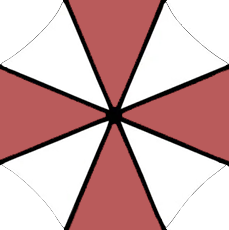
The Zombified status eliminates damage reactions and allows you to regenerate health automatically, but with some caveats.
It can be removed immediately by using a Green Herb or Mixed Herb (G+R)
This Status Ailment is exclusive to the Event Quest RE: Return of the Bioweapon
 Anonymous
AnonymousThe elemental damage formula with the exemple of the Great Jagras tail is extremely wrong and misleading. The hitzone multiplier is 0.15, not 1.15, 22 fire damage with a low hitzone and 180 fire elem is completely absurd, if this was true elem weapons would be insanely overpowered. This needs to be fixed.

 Anonymous
AnonymousBoth the Raw and Elemental formulas are wrong.
For Elemental its x 0.15 (Monster Part multiplier for Great Jagras' tail against Fire Damage) Not 1.15x.
So Elemental damage in that example is:
18 (Starting Elemental value / 10)
x 1.0625 (Sharpness multiplier for blue level sharpness towards elemental)
x 0.15 (Monster Part multiplier for Great Jagras' tail against Fire Damage
= 3 Fire Damage (rounded up) Not 22 Fire Damage.
"For Raw: x 1.2 (Sharpness multiplier for green-level sharpness - non-elemental) is wrong." I think you meant to write blue-level sharpness.
 Anonymous
AnonymousAnyone else find it funny that the highest raw damage variant for every weapon is Fatalis EXCEPT for Light Bowgun, which is Rajang?

 Anonymous
AnonymousThis page says that a lance "using cut damage in a blunt hitzone" has a "significant penalty" to damage, and Kiranico and the Fandom MH wiki say that lances can use blunt hitzones (or 72% of them) if they're much better than the cutting one. But from what I've tested in World it seems like lance always does the normal cut hitzone damage, even against parts with high blunt hitzones. The Shara lance against Behemoth's back legs deals 22 damage so the math checks out. Does anyone know more about this? Should the page be edited?

 Anonymous
AnonymousPls add the fact that Charge Blade Axe form uses Double sharpness

 Anonymous
AnonymousSo, If I am using a blast weapon against a monster with with high resistance to blast.. Will I deal the same raw damage to him? (Not referin to the blast)

 Anonymous
Anonymous
 Anonymous
AnonymousIm confused on the raw damage. Is the example right? They said the raw damage for the Buster Sword III is 149. If i'm doing this right the buster sword has a attack power of 480. I then divide 480 by 4.8 for the great sword modifier. That gives me 100....where does the 149 come from? How is 149 the raw damage?

 Anonymous
AnonymousThose sharpness multipliers are totally wrong and way off. Which is weird because has the correct values.

 Anonymous
Anonymousthe status effects show up under element on a weapon so can elemental airborne up them

 Anonymous
AnonymousAre abnormal status effects an element or not? Meaning elementless should work on a weapon that has poison, para, sleep and blast.

 Anonymous
AnonymousCan the player inflict elemental blights (or anything similar) to monsters, or a elements just straight damage?

 Anonymous
AnonymousThere is a skill that boosts attack power for non-elemental weapons ( I forgot what the skill is called) but as I look at the weapon tree, Pretty much everything has some sort of elemental dmg. Can anyone help me understand the use of the skill?

Why is slime even mentioned (in dragon element).... Its not ingame, and hopefully NEVER will be

 Anonymous
AnonymousSo I just learned that matching up elemental weapons to a monsters weakness isn't always the best bet, and that it's probably better to use fast weapons if you want elemental damage and try to stick with base damage for slower ones. But what about something like longswords that have a medium speed? Is it better to focus on base dmg or elemental?

 Anonymous
AnonymousFor the weapons that have "fire (180)" dimed out. could you explain how that works. E.G. Charge blade Odium (Odogaron tree) its element is grey and dimmed.

 Anonymous
AnonymousIn case anyone was wondering, there is no purple sharpness. White is the max, and can be reached easier with the handicraft skill.

 Anonymous
Anonymous
 Anonymous
AnonymousExample: Flame Blade I. If I attack an Anjanath is the fire damage affix all that's being negated? OR is the overall damage from the weapon being lessened due to it being a fire type weapon? What I'm trying to determine is if it's in my better interest to use a really high power weapon (even with a fire affix) versus using an equivalent GS with ice or water affix that has significantly LESS attack power.

 Anonymous
AnonymousI don't understand I have a weapon with 363 atk power and one with 462 a big differrence but on the same monster (great jagras ) I aproximately do the same amount of damage is there something i did not understand ?

 Anonymous
AnonymousSkills that increase elemental attack say there is a maximum limit to how much this can be increased to. I have heard it is different for each weapon type does anyone know what these limits are?

 Anonymous
Anonymous
 Anonymous
AnonymousSo how do i make aqua slasher? Do i have to upgrade my bone gs fully to get to the water element path?

 Anonymous
AnonymousHello, I have a question about bow. when you land a shot, there is a diamond symbol and do more damage on the number. Is that a Crit ( affinity) ? I know the number colur turn yellow means it land on the weak spot. and when I play melee, there is red flashing light when you have affinity.

 Anonymous
Anonymous
 Anonymous
AnonymousHow does the paralysis effect activate on the dark scimitar?

 Anonymous
AnonymousWhat is Elderseal? its on my Dragon bone Bow II but i have no idea what it does.

 Anonymous
Anonymous

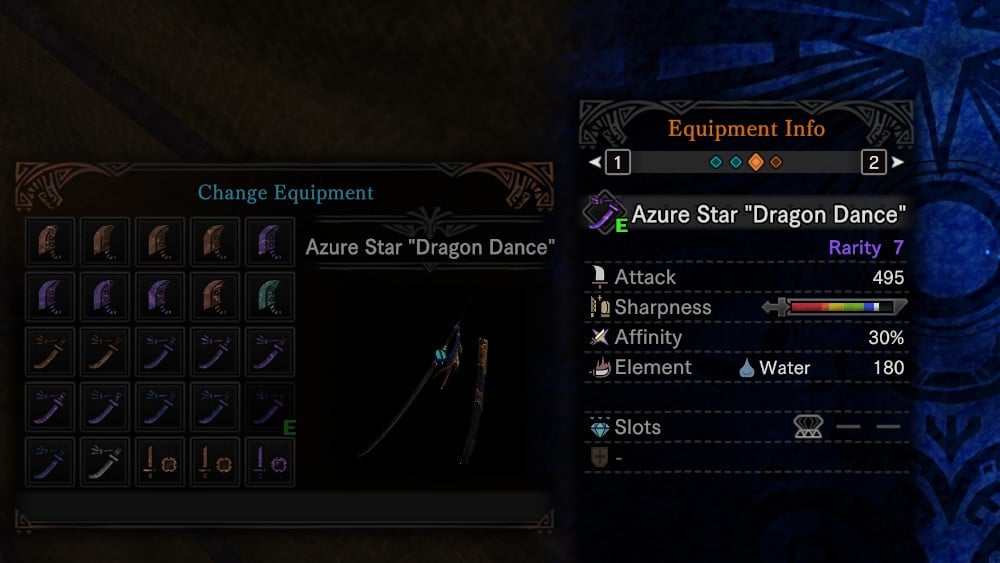
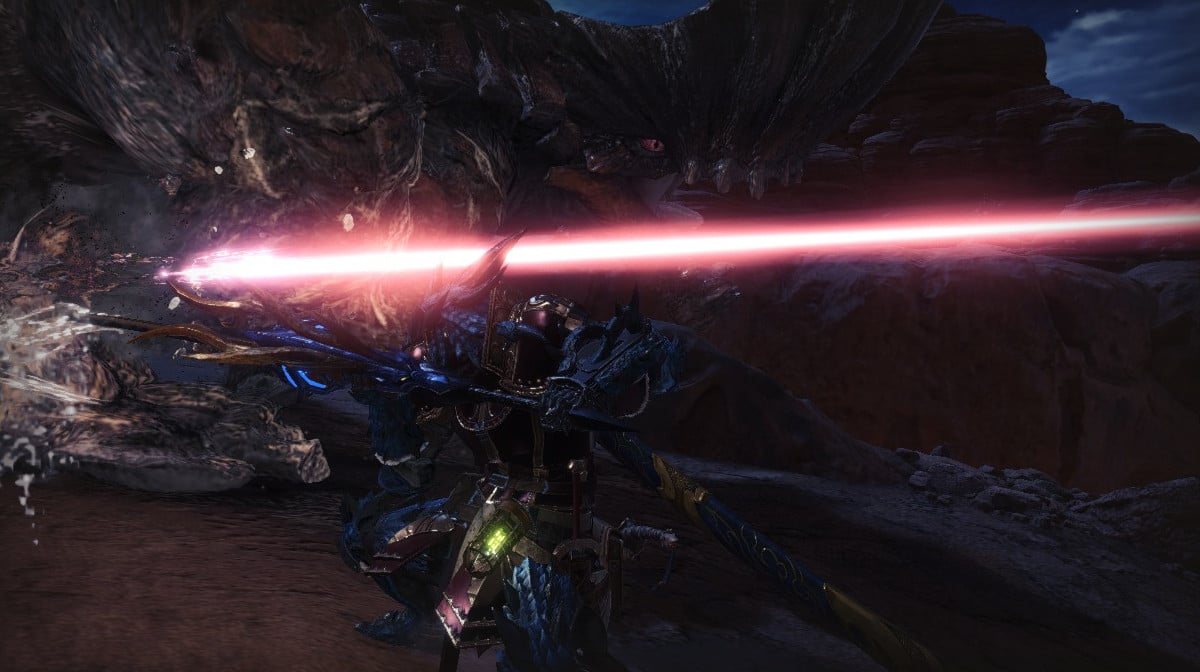
I don't think the page properly explains how bow damage calculations work, or at least isn't clear about it. Does the elemental portion work more like melee elemental damage or elemental ammo? Does every arrow in a single shot proc the elemental damage separately? Do move multipliers affect it? What about charge level? I can't seem to find the proper formula anywhere...
5
+10
-1